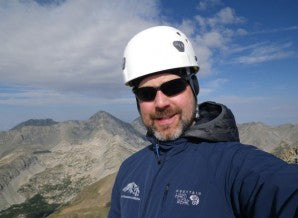We’ve all been there. That slight feeling of panic when you wonder if you are off the trail, or worse…lost! Then, like seeing an old friend for the first time in years, you spy the next rock cairn just beyond the next bend. Relief.
These piles of rocks are all too common above treeline. They are made by man (and by man I mean men and women) to help guide us and keep us on the right path. We know them, but what do we know about them? The word cairn derives from the Scottish Gaelic word: càrn (plural càirn). Cairns are found all over the world: mountaintops, desserts, uplands, seacoasts, waterways and tundra. In some cultures they are used for burial purposes. Mostly, they are simply beacons to guide us in terrain devoid of helpful visuals – signposts, trees, etc. Where a trail can be clearly visible in summer, a fresh snowfall is quick to obscure your path in winter.
For the most part, cairns should be left alone. Depending on what part of the world you find yourself, that cairn may be sacred. Cairns for religious or burial purposes are many times marked with banners, flags, paint and offerings. In Norse Greenland, cairns were used for hunting. They marked a game driving "lane", used to direct reindeer towards a game jump. Much in the same way the Plains tribes of the United States drove buffalo off cliffs.
In Scottish Highland lore, clan members would place a stone in a pile before a battle. Those who survived the battle returned and removed a stone from the pile. The remaining stones were built into a cairn to honor the dead.
The Colorado Fourteeners Initiative (CFI) is a group who has seen more than a few cairns in their efforts to preserve the alpine trail systems. “In some instances cairns are constructed on a minimal level and carefully placed in areas where the trail is easily lost and there is a risk of straying off the trail and onto the fragile plant life”, says the CFI. “Conversely, cairns are taken down that are misleading and send users off the intended route; or that are unnecessarily placed on the trail, and therefore interrupting the health of the natural ecosystem of the peak and the integrity of the climb.”
If you find that a cairn is in bad shape, by all means stop and stack a few rocks. Show that mountain that you cairn.
As if cairn wasn’t hard enough to pronounce the first time, impress your friends with some other ways to say it:
- "ahu" is Hawaiian for rock cairn (click to tweet)
- "steinmann" is German for stone man / rock cairn (click to tweet)
- "ometto" is Italian for small man / rock cairn (click to tweet)
Continue reading

